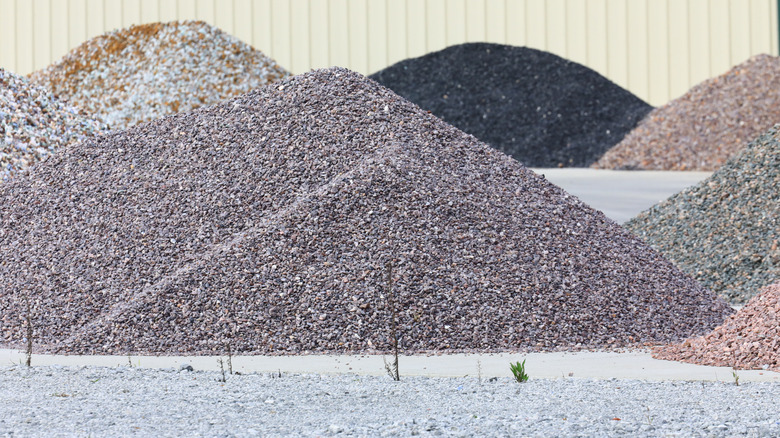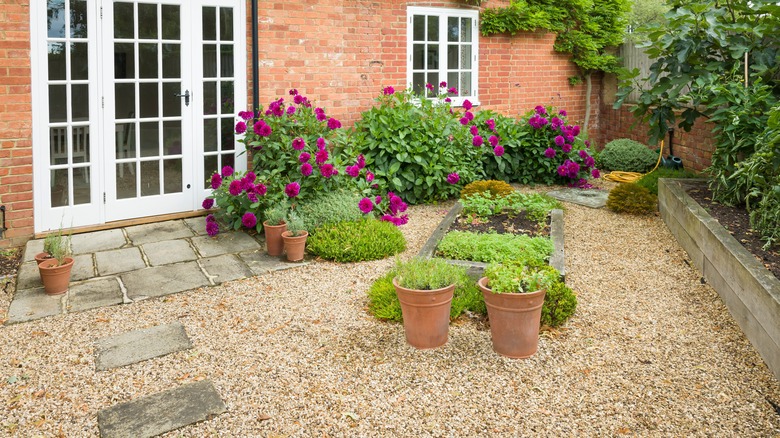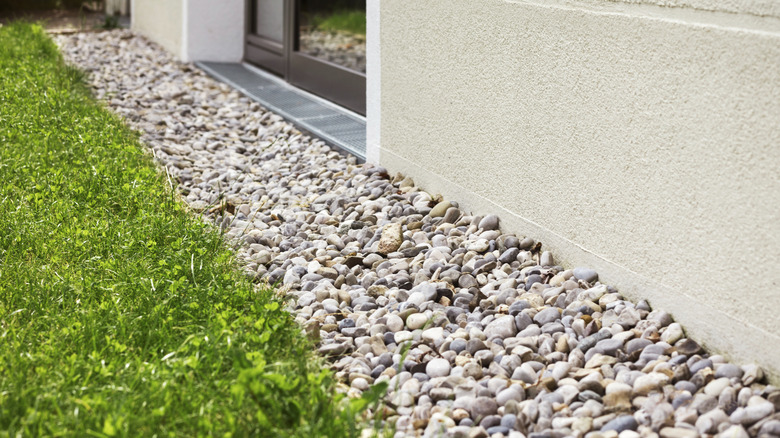Small Vs Large Gravel: How To Know Which Is Best For Your Project
Gravel is among the most commonly used building materials, and it's a key element in many outdoor DIY projects. Driveways, patios, walkways, and even garden beds are just some of the ways it's used in landscaping, where it provides an attractive surface and facilitates drainage. The term "gravel" refers to a mix of rock and sand. It's not as fine as sand, but also not as jagged as large pieces of crushed stone.
With that said, gravel comes in many sizes. Each suits a different purpose, and one of the biggest mistakes people make when using gravel in landscaping is not using the proper size for the project. Such an error can lead to serious issues down the line. Generally, you'll want to use smaller gravel for projects like patios, driveways, walkways, and decorative landscaping. Meanwhile, larger gravel and crushed stone are best for areas that need really effective drainage, like a French drain or the base of a driveway.
Understanding particle size can simplify the selection process for you. Particle size refers to the screen size used to filter the gravel — the smaller the number, the larger the stone. For example, #10 is ultra-fine sand, while #1 is the largest gravel available and usually measures up to 4 inches in diameter.
When to use smaller gravel for your project
Gravel that's between ¼-inch to 1-inch in size, or between #5 and #10 particle size, is considered "small." Pea gravel, which gets its name from the stones' pea-like shape, is the smallest type you can purchase. One common use for it is in home projects, such as creating a patio or pathway. Laying gravel for these areas starts with excavating to a depth of at least 5 inches or so. Next, you may need to lay down and compact the base material — likely larger crushed stone. You'd complete the project by covering the area with around 2 inches of the small pea gravel.
There are other variations of small gravel that are common for DIY projects, too. For example, #57 gravel is often used for driveway surfacing due to its unique balance of affordability, functionality, and aesthetic appearance. As the labeling number suggests, this variation is a combination of gravel sizes #5 and #7. You may also find #57 used for retaining walls and landscaping. Regardless of which type you're working with, follow the top gravel patio maintenance tips to keep your project in top condition.
Projects where large gravel is the right choice
On the other side of the spectrum is large gravel, typically #5 and lower. The larger stones are ideal for landscaping and construction projects that rely on adequate drainage. For example, a French drain is a system that helps to take excess water and move it away from important structures like a home's foundation. These trenches rely on the small gaps created by the varying sizes of the large stones, which help to divert water through the system. Gravel that is too small can block these openings and prevent water from flowing freely.
Large gravel, such as #3 or lower, is usually the top choice when stone is needed for a solid base material. While it may not be apparent from the outward appearance, many parking lots and roadways have this type of gravel for the primary base foundation. No matter what you're working on, be sure to choose the proper size gravel for your project and use the essential tools for laying gravel for a polished final look.


